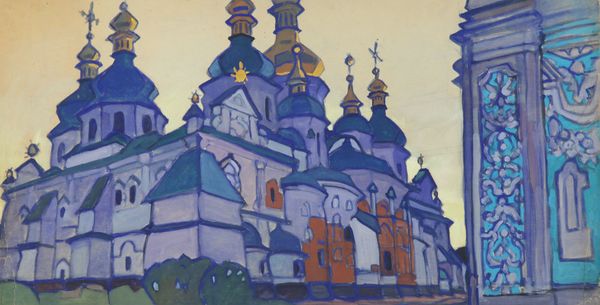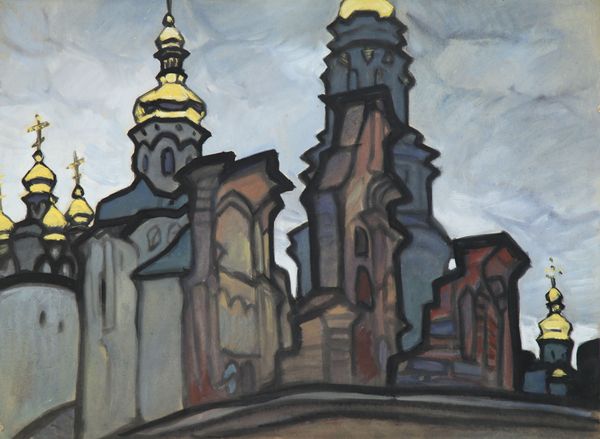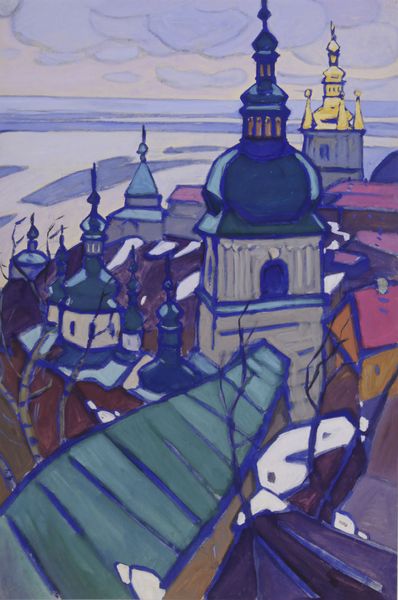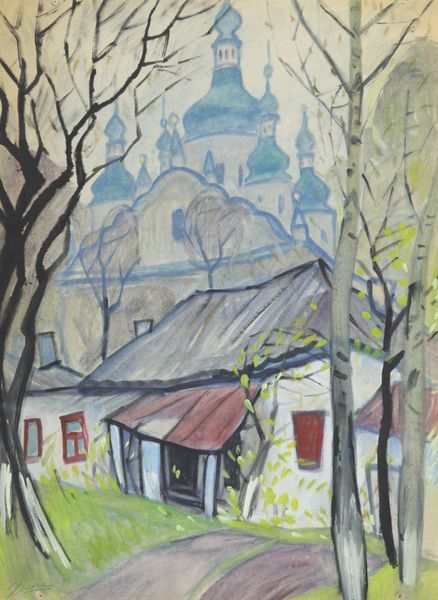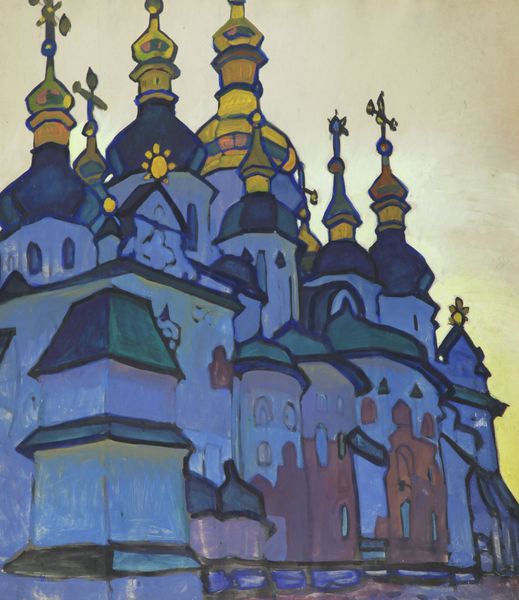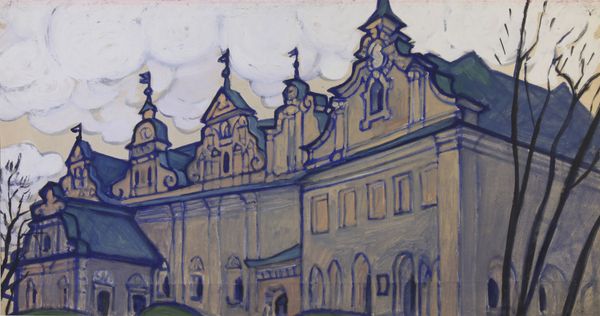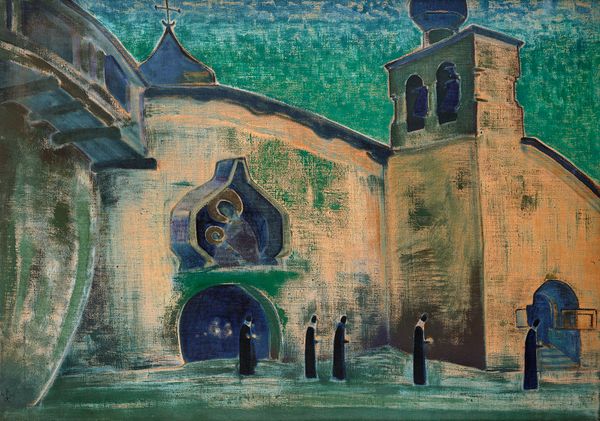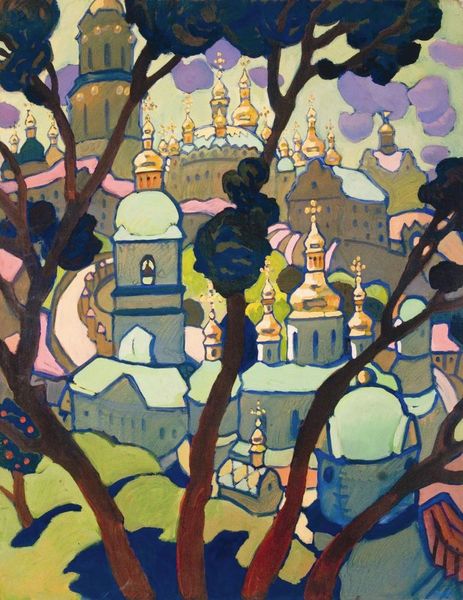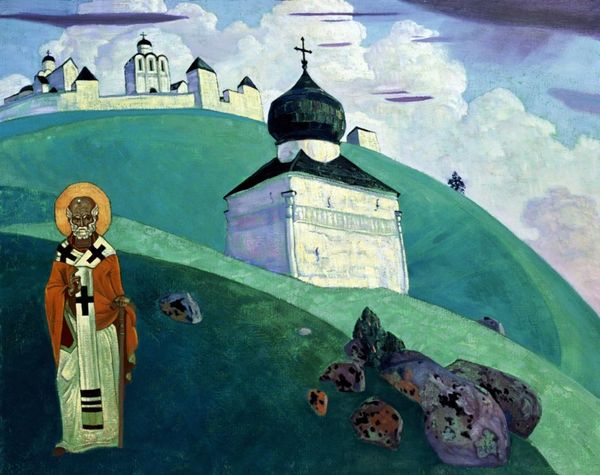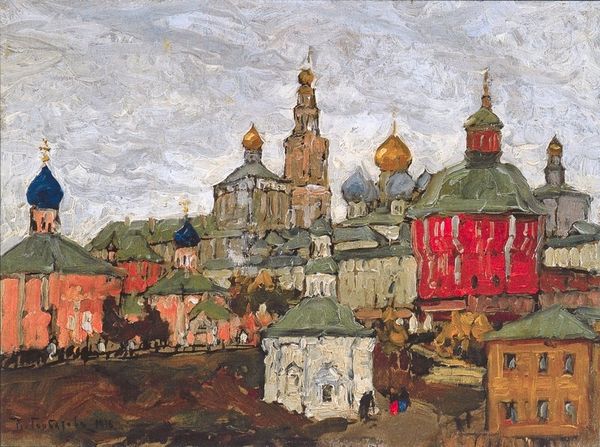
tempera, painting, watercolor
#
tempera
#
painting
#
landscape
#
figuration
#
watercolor
#
folk-art
#
cityscape
#
genre-painting
#
building
Dimensions: 54 x 84.5 cm
Copyright: Yuriy Khymych,Fair Use
Editor: Here we have Yuriy Khymych's "Ancient Division. Behind the wall of the Florovsky monastery," painted in 1979 using tempera and watercolor. It’s a fascinating cityscape; the domes feel grand, almost defiant, against the muted palette and ordinary street scene. What do you see in this piece? Curator: I see a powerful commentary on the complexities of Soviet-era Ukrainian identity. Khymych subtly juxtaposes the enduring presence of religious institutions, represented by the Florovsky monastery, with the everyday lives of people under a secular regime. Look at the division created by the wall. Does it literally separate the religious space from public space, but perhaps also serves as a metaphor for the internal conflicts and negotiations of faith within individuals during that period? Editor: That's an interesting take. I hadn’t considered the implied tension between the sacred and the secular. The figures almost seem resigned, walking past the monastery, as if there’s an acceptance of the division. Curator: Exactly. And the muted tones, the somewhat oppressive atmosphere... does that convey a sense of quiet resistance, or perhaps a more passive acceptance of imposed ideologies? Consider how the "ancient division" in the title speaks not only to the physical separation, but to the historical and cultural rifts that shaped Ukrainian society. What’s foregrounded in the narrative, the resilience of the institution or the state's overwhelming power? Editor: I see it now. The artwork operates on multiple layers. It is beautiful yet complex. Thank you for showing me new ways to appreciate this cityscape. Curator: It’s in such multilayered readings that art history engages contemporary questions of identity and power. Hopefully you agree, paying close attention to marginalized and subjugated populations gives context to understanding artwork.
Comments
No comments
Be the first to comment and join the conversation on the ultimate creative platform.
